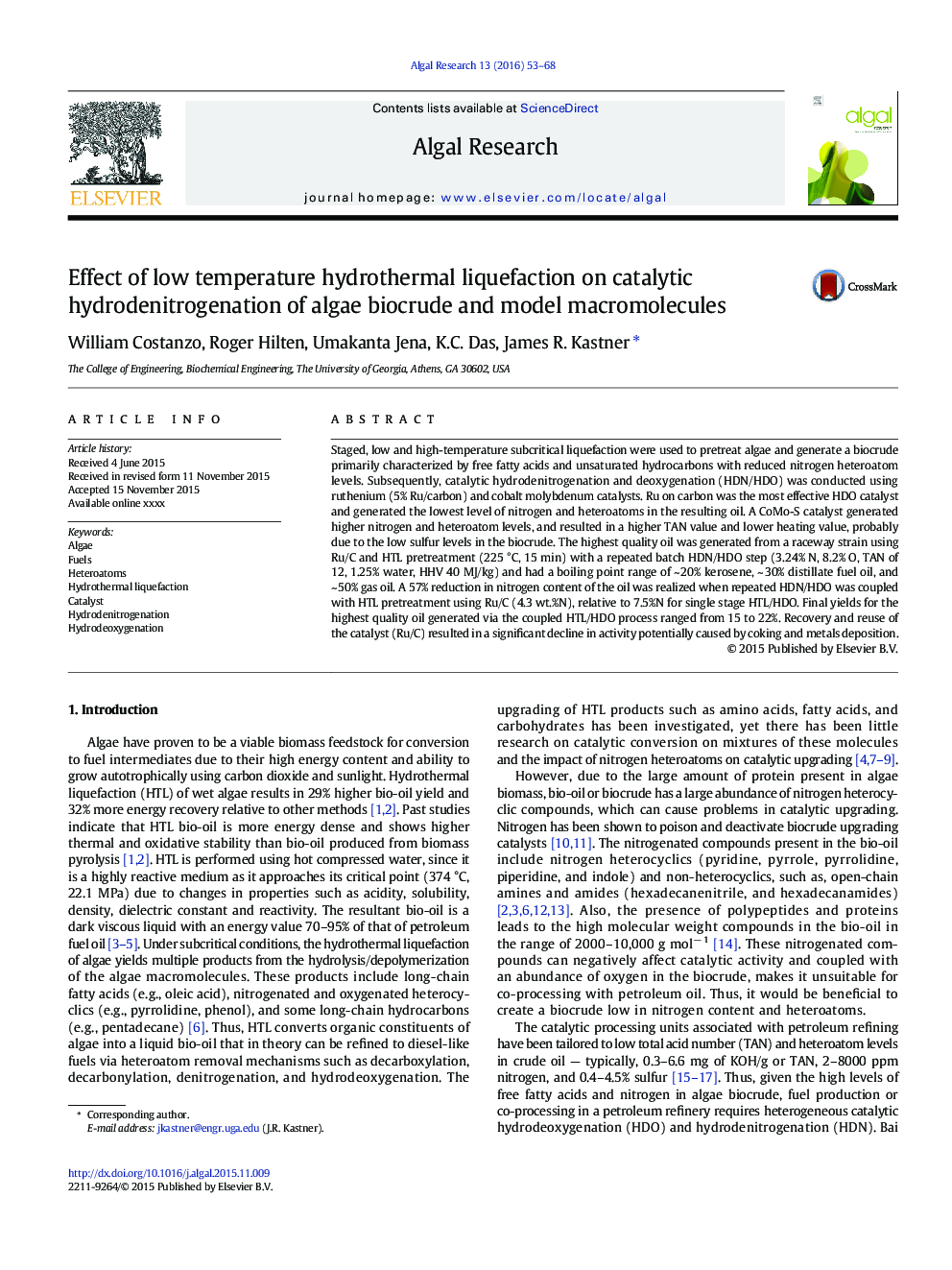| کد مقاله | کد نشریه | سال انتشار | مقاله انگلیسی | نسخه تمام متن |
|---|---|---|---|---|
| 8087530 | 1521819 | 2016 | 16 صفحه PDF | دانلود رایگان |
عنوان انگلیسی مقاله ISI
Effect of low temperature hydrothermal liquefaction on catalytic hydrodenitrogenation of algae biocrude and model macromolecules
ترجمه فارسی عنوان
تاثیر مایع سازی هیدروترمال مایع با دمای پایین بر روی هیدروژنوتروژی کاتالیزوری جلبک های زیستی و ماکرومولکول های مدل
دانلود مقاله + سفارش ترجمه
دانلود مقاله ISI انگلیسی
رایگان برای ایرانیان
کلمات کلیدی
موضوعات مرتبط
مهندسی و علوم پایه
مهندسی انرژی
انرژی های تجدید پذیر، توسعه پایدار و محیط زیست
چکیده انگلیسی
Staged, low and high-temperature subcritical liquefaction were used to pretreat algae and generate a biocrude primarily characterized by free fatty acids and unsaturated hydrocarbons with reduced nitrogen heteroatom levels. Subsequently, catalytic hydrodenitrogenation and deoxygenation (HDN/HDO) was conducted using ruthenium (5% Ru/carbon) and cobalt molybdenum catalysts. Ru on carbon was the most effective HDO catalyst and generated the lowest level of nitrogen and heteroatoms in the resulting oil. A CoMo-S catalyst generated higher nitrogen and heteroatom levels, and resulted in a higher TAN value and lower heating value, probably due to the low sulfur levels in the biocrude. The highest quality oil was generated from a raceway strain using Ru/C and HTL pretreatment (225 °C, 15 min) with a repeated batch HDN/HDO step (3.24% N, 8.2% O, TAN of 12, 1.25% water, HHV 40 MJ/kg) and had a boiling point range of ~ 20% kerosene, ~ 30% distillate fuel oil, and ~ 50% gas oil. A 57% reduction in nitrogen content of the oil was realized when repeated HDN/HDO was coupled with HTL pretreatment using Ru/C (4.3 wt.%N), relative to 7.5%N for single stage HTL/HDO. Final yields for the highest quality oil generated via the coupled HTL/HDO process ranged from 15 to 22%. Recovery and reuse of the catalyst (Ru/C) resulted in a significant decline in activity potentially caused by coking and metals deposition.
ناشر
Database: Elsevier - ScienceDirect (ساینس دایرکت)
Journal: Algal Research - Volume 13, January 2016, Pages 53-68
Journal: Algal Research - Volume 13, January 2016, Pages 53-68
نویسندگان
William Costanzo, Roger Hilten, Umakanta Jena, K.C. Das, James R. Kastner,
